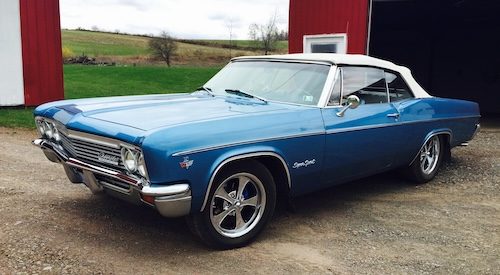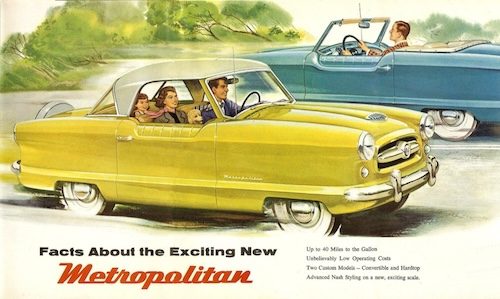By Greg Zyla —
1981 to 1983 Chrysler Imperials
Q: Greg, I saw a 1981 to 83 Chrysler Imperial recently and thought it was a good-looking car. I wasn’t sure of the year as they only made them for three years and they looked the same. What is your opinion of the 1981 to 1983 Imperials? What are they worth today? John L., Lancaster, Pa.
A: John, I remember the 1981-1983 Imperials well, as the Imperial made a return to production after being absent from Chrysler’s lineup since 1975. The 1981-83 full size Imperials were built when Chrysler was facing major financial trouble, and although a grand total of only 10,981 were ever built, it was a great-looking and well-equipped car.
The Imperial was designed under the direction of Lee Iacocca, who was the CEO of Chrysler at the time. He wanted to create a luxury car to compete with Cadillac and Lincoln, leading to the development of the Imperial based on the Chrysler Cordoba platform.
Surprisingly, although they looked full-size, these Imperials were built on the mid-sized Aspen/Volare platform and stretched to parallel Chrysler marketing theory, along with shared mechanicals, with its hit sibling Chrysler Cordoba. Cordoba debuted in 1975 and sold a stunning 150,105 units that year!
Personally, a large part of Cordoba’s success came from those famous television commercials that featured the late actor Ricardo Montalban touting Cordoba’s “Corinthian leather.” The Cordoba also lasted until 1983 and finished its career as one of Chrysler’s most popular full-size models of the era with over 757,000 sold.
Unlike the Cordoba, the Imperial came with a fuel-injected 318 engine, which developed just 140 government-restrained horsepower, and lots of luxury items. Cordoba, meanwhile, offered a six-cylinder engine along with a carburetor-fed V8. The Imperial’s electronic fuel injection was problematic, similar to the problems Chrysler experienced back in 1958 when Chrysler utilized an Electrojector fuel injection system on several models. The result? Just like 1958, many Imperials were recalled and replaced with carburetors.

The 1981 to 1983 Chrysler Imperial was a Lee Iacocca luxury car that lasted just three years. Although beautiful in many ways, the Imperial came to market when smaller, fuel-efficient cars were what consumers wanted. However, in 1984, Iacocca released the vehicle that saved Chrysler, the minivan. (Chrysler)
On the good side, Imperial’s 1981-83 styling is still beautiful to this day, and as I write this, we’re already in 2025. The Lincoln-type front grille merged nicely with a rear that mimicked the second-generation Cadillac Seville of that era. It was called a “bustle back” rear design, similar to British cars from the Fifties like Rolls Royce and Bentley. Some of the key features Imperial offered included Mark Cross interiors, electronic digital instrumentation, clear coat paints, and a “fully loaded” car that retailed for $18,311. The only option available in 1981 was a power sunroof.
However, unlike Cordoba, dismal sales occurred in the Imperial line. The first year found just 7,225 1981 Imperials built, so Chrysler head Lee Iacocca, remembering Montalban’s success with Cordoba, hired friend Frank Sinatra to sing “isn’t it time for an Imperial” in commercials. But the economy wasn’t good, consumers wanted gas savers, and Imperial sales dropped to just 2,329 in 1982 and only 1,427 the final year.
Chrysler then set its sights on saving the company and went to work on the new minivan, which was waiting in the wings. Thanks to the 1984 Industry first Dodge-Plymouth “minivan,” the company survived. Minivans were assembled on the K-car platform and were an immediate hit with consumers.
Today, an Imperial from 1981-83 in good condition is probably worth about $8,600 to $21,395 according to Hagerty classic car values. Remember, classic car values are always subjective to how much a buyer wants a car, and actual money exchanged.
Thanks for your question.
Loved Christmas Lights column
Q: Mr. Zyla, your article in the Bloomsburg Press Enterprise on “Cars we remember: it’s a wonderful ride” was, in my opinion, one of the best written in years, along with the pictures.
Why can’t more of our small communities decorate with Christmas lights like we remember?
Us baby boomers remember, so why can’t the younger generation just get it?
Much of your article reminded me of those great years when we used to pile in the car and just go look at the Christmas lights everywhere!
And the cars!

Jane Hyde, from Bloomsburg, sends along this photo of her friend’s 1966 Chevy Impala Super Sport convertible. The full-sized classic car is looking impressive with those special wheels and a 327-V8 under the hood. (Hyde Photo)
Oh, my goodness, there was nothing like it!
I was at the tail end of the baby boomer generation. I can remember my older sister dated a guy with a 1968 Corvette. You know, as young as I was back then, there were some things that just stuck in my head, and that car was one of them. What a classic!
Which reminds me, I thought I would send you an attachment you would enjoy looking at.
I’m friends with a man who lives in Sugar Run, not far from Sayre. He has an original 1966 Impala Super Sport convertible. He’s owned it since new as he was one of the last Farm deferments, which saved him from possibly going to Vietnam. His parents bought him the car as a reward, and I have attached a picture of it. This Impala really is a classic, literally.
I will be reading more articles you have written in the Press Enterprise.
Thank you, Jane Hyde, Bloomsburg, Pa.
A: Jane, thank you for your letter about my column on the Christmas lights. Furthermore, your friend’s 1966 Chevy Impala SS with a 327 under the hood truly is one of the nicer ’66 Impalas I’ve seen. Those wheels really set the car off.
Thanks again for your letter and to all the other readers that took the time to write or send me a Christmas card, as each and every one keeps me going. Happy New Year!

The Nash Metropolitan was sold in America from 1954 through 1962. Fisher & Ludlow in England built the Metropolitan bodies. (Nash Rambler)
Nash and Hudson Metropolitan query
Q: Greg, I appreciated your column on the Nash and Hudson Metropolitan you wrote a while back. Who built the Metropolitan bodies? You had mentioned that the engines were from the Austin car company in England. Did Austin build the body, too? Thanks, Ken S., Owego, N.Y.
A: Ken, the answer is no on the bodies. Although the Metro was designed in the U.S. by William J. Flajole for Nash-Kelvinator, the bodies were built by Fisher & Ludlow in Birmingham, England, and then shipped to the nearby Austin car company, also located in Birmingham, where final assembly took place.
Included was Austin’s 52 horsepower 4-cylinder engine and all the other necessary mechanicals. Production began in 1954 and ended in 1962. The car was officially under the AMC banner in 1958, which was the result of the merger between Hudson and Nash/Rambler in 1954. AMC still used the Nash and Hudson nameplates through 1957, but in 1958 utilized the new AMC banner. The final Nash and Hudson cars were built on June 25, 1957.
However, sold as an American car by an American car company, the Nash, Hudson, and AMC Metropolitans were assembly-wise a near 100% foreign car (and a neat one, too). We can summarize the Metropolitan as designed and influenced by AMC, while mechanically assembled with “over the pond” ingredients thanks to the Brits.
Hope this helps, Ken.
(Greg Zyla is a syndicated auto columnist who welcomes reader input at extramile_2000@yahoo.com or snail mail at Greg Zyla, Roosevelt St., Sayre, Pa. 18840.)



Be the first to comment on " Cars We Remember/Collector Car Corner; Chrysler Imperials, Metros, and a cool 1966 Impala ragtop"